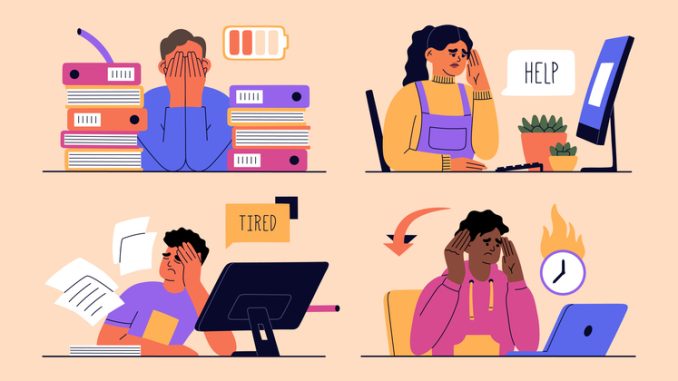
Employee burnout is a serious issue, not just in notoriously bad workplaces. It’s not only about a toxic environment or heavy workload; emotional and mental exhaustion also play a significant role
CREDIT: This is an edited version of an article that originally appeared on When I Work
What is employee burnout?
The World Health Organisation identifies three key aspects of employee burnout:
- Feelings of energy depletion or exhaustion.
- Increased mental distance from one’s job, or feelings of negativism or cynicism.
- Reduced professional efficiency or productivity.
According to Gallup, 23% of employees feel burnt out often or always, while 44% feel burnt out sometimes. This means about 70% of your staff could be dealing with burnout at any given time.
Signs of burnout include poor work performance, increased absenteeism, emotional outbursts, and negative feedback. If staff feel undervalued or overwhelmed, it’s time to take action. A lack of team spirit or uneven workload distribution also contributes to burnout.
Burnout doesn’t just affect individuals; it impacts the entire workplace community. It leads to higher turnover, more sick days, and a drop in quality of work. Financially, it costs UK businesses an estimated £125 billion to £190 billion annually in healthcare.
Preventing burnout
Here are some strategies to help prevent burnout among your staff:
Prioritise mental health
Mental health should be a priority. Create a supportive environment where staff feel safe discussing their mental health without fear of repercussions. Use anonymous surveys to gauge staff wellbeing, talk about mental health openly, and offer training on coping mechanisms.
Offer meaningful rewards
Rewards shouldn’t just be for high performance. Recognise and appreciate your staff with gift cards, extra break times, or even a heartfelt thank you. This helps staff feel valued beyond their productivity.
Avoid punitive reactions
If a staff member is struggling, avoid knee-jerk punitive reactions. Instead, talk to them privately, listen to their concerns, and consider making adjustments to their workload or expectations.
Manage schedules sensibly
Plan schedules in advance to avoid last-minute stress. Ensure that workloads are reasonable and that staff have adequate time to rest and recover.
Consider off-hour obligations
Recognise that some staff may have other commitments outside work. Be understanding of their need to balance multiple responsibilities.
Set achievable goals
Even if there’s no clear path for promotion, set achievable goals. This could be through professional development opportunities or new responsibilities that align with their skills and interests.
Foster a positive culture
A positive workplace culture is crucial. Ensure clear communication, reasonable workloads, and buffer zones to protect staff from unreasonable demands. A supportive team environment where everyone works together can significantly reduce burnout.
Addressing employee burnout requires understanding its causes, recognising the signs, and implementing effective strategies. Employee burnout isn’t just about too much work. It’s about emotional and mental strain, lack of support, and feeling undervalued. By tackling these issues head-on, you can reduce turnover, absenteeism, and improve the overall experience for everyone involved in the organisation.


Be the first to comment